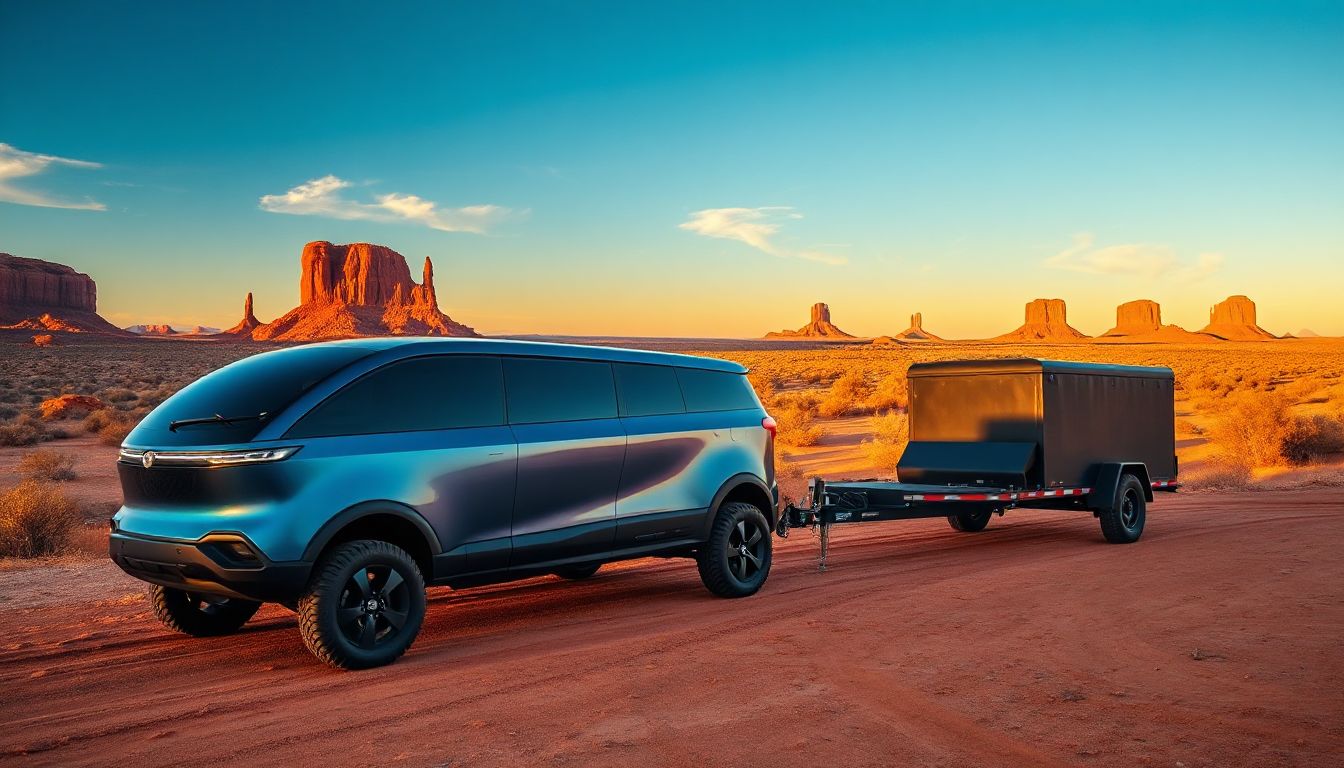Introduction
Electric vehicles are becoming more popular worldwide, and Australia is no exception. As climate concerns grow and fuel prices rise, more companies and farmers are looking for smarter options. Electric tow vehicles (ETVs) are gaining popularity as a clean, cost-effective way to move heavy loads. Whether it’s for farms, logistics, or recreation, these vehicles promise a better future. Switching to electric towing means fewer emissions, lower running costs, and smoother operations. This shift could change how Australians do work and play while helping protect the environment.
Understanding Electric Tow Vehicles in Australia
The Basics of Electric Tow Vehicles
Electric tow vehicles are designed to pull or move heavy objects without using diesel or gasoline. Instead, they run on batteries and electric motors. You can find different types to fit various needs. Light-duty models work for smaller tasks, while heavy-duty options handle tough jobs like farm equipment or large trailers. Off-road models are built to handle rough terrain. The main parts include big batteries, powerful motors, and charging stations that keep them ready to go.
Market Overview and Trends
The electric tow vehicle market in Australia is growing fast. More manufacturers are introducing models suited for our roads and conditions. Currently, local options include brands like Tesla, Nissan, and emerging Australian companies. Sales are climbing as businesses see the benefits of electric alternatives. Globally, ETVs are already replacing traditional diesel trucks in many places, a trend that’s now catching on in Australia too. As charging networks expand, the market for electric towing will only grow stronger.
Benefits of Using Electric Tow Vehicles
Using ETVs helps the environment by cutting emissions. They release no greenhouse gases during operation, meeting Australian rules for cleaner transport. Cost-wise, they save money on fuel and need less maintenance because electric motors are simpler than diesel engines. They also run quietly, making work safer and less disruptive. Plus, they’re often more reliable, especially when fitted with the latest safety features. All these advantages make choosing electric a smart move for many Australian users.
Key Features and Specifications of Electric Tow Vehicles
Battery Technology and Range
Most Australian ETVs use lithium-ion batteries. These packs are light but store plenty of power. Depending on the model, the range on a single charge can be between 80 km and 200 km. Heavy loads or extreme weather can affect how far they go before needing a recharge. Advances in battery tech are helping to extend these ranges, making electric towing more practical.
Power and Towing Capacity
Electric tow vehicles are built to handle different weight limits. Some can pull up to 3 tonnes or more, appropriate for farms and small construction jobs. Compared to gas or diesel options, electric models often provide quicker acceleration and better control. They fit well in applications like hauling equipment, trailers, or livestock in rural areas and cities alike.
Charging Infrastructure and Compatibility
Charging stations in Australia include standard AC outlets and fast chargers. Fast chargers can boost a battery in under 30 minutes, while regular charging may take several hours. More charging stations are popping up along highways and rural areas, making long trips easier. Most electric tow vehicles are compatible with existing Australian charging networks, easing transition for businesses and farms.
Choosing the Right Electric Tow Vehicle in Australia
Assessing Your Towing Needs
Before buying, think about what you need. How heavy are the loads? How far will you travel? Will you work on rough terrain? Understanding these questions helps you pick a model that fits your operation. For farms, a model with high towing capacity and good range is key. For city freight, speed and efficiency might matter more.
Key Considerations
Budget matters but don’t forget to think about long-term costs. Electric vehicles often save money on fuel and maintenance. Infrastructure should also be evaluated — do you have enough charging points? And check if the vehicle meets Australian safety guidelines and emissions standards.
Top Models and Recommendations
Popular models in Australia include the Tesla Cybertruck, Nissan Leaf Heavy-duty, and local startups like HVR. These models offer varied features, from high towing capacity to quick charging. Customer reviews highlight their reliability, quiet operation, and lower running costs. Experts advise considering your main use and future needs when choosing a model.
Challenges and Considerations for Deploying Electric Tow Vehicles
Infrastructure Challenges
Electric trucks need good charging spots, which are still missing in some rural parts of Australia. Expanding the network takes time, but government programs aim to speed this up. More charging points mean fewer worries about long trips or remote work.
Battery and Technology Limitations
Heavy loads and extreme weather can reduce battery life or range. Batteries also wear out over time and might cost a few thousand dollars to replace. Planning for replacements helps keep operations smooth.
Regulatory and Policy Landscape
Australian policies now encourage electric adoption through incentives and grants. Local laws require EVs to meet strict safety standards. Keeping up with changes ensures compliance and access to support programs, making the switch easier.
Practical Tips for Transitioning
Start by assessing your current fleet and needs. Upgrade your charging stations if necessary. Train staff on safety and operation of new vehicles. Planning ahead avoids surprises and ensures a smooth transition to electric towing.
The Future of Electric Tow Vehicles in Australia
Emerging Technologies and Innovations
Ongoing advances in battery tech mean longer range and shorter charging times. Newer models are incorporating solar panels and renewable energy sources. smarter charging solutions will make electric towing even more convenient.
Policy and Market Forecasts
Experts predict steady growth for Australian ETVs. Government incentives are expected to boost adoption further. Businesses that move early will benefit from lower costs and greener operations.
Actionable Steps for Stakeholders
Companies should evaluate their fleets and explore electric options. Manufacturers need to develop models suited for Aussie conditions. Governments can help by expanding charging networks and providing financial incentives to encourage adoption.
Conclusion
Electric tow vehicles are set to transform Australia’s transportation landscape. They offer clear benefits—less pollution, lower costs, and better efficiency. Building infrastructure and embracing new tech will accelerate this shift. For anyone involved in towing, now is the perfect time to consider making the switch. We’re moving toward a future where clean, quiet, and smart electric towing powers Aussie businesses and farms alike, making a real difference for our environment. Embrace the change and help shape a sustainable tomorrow.




